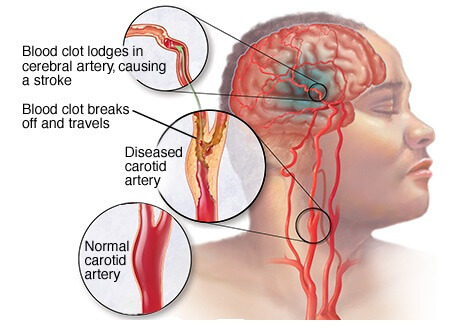Bleeding in the brain is referred to as a brain hemorrhage. A brain bleed, also known as an intracranial hemorrhage, is a medical condition. It’s a medical emergency that requires immediate treatment. Since the brain is surrounded by the skull, any leaking blood from a hemorrhage will compress and damage the brain tissues. A hemorrhagic stroke happens when a blood vessel in the brain leaks or bursts, causing bleeding.
Excessive bleeding can cause compression to the brain tissue, preventing oxygen-rich blood from reaching the brain tissue. A lack of oxygen in the brain can lead to swelling or cerebral edema. A hematoma is a collection of blood that has pooled after a bleed. This increased pressure will prevent oxygen from reaching brain cells, causing them to die.
Symptoms
A brain haemorrhage may result in a different of symptoms. Sudden tingling, weakness, numbness, or paralysis of the face, arm, or leg are some of the symptoms. This would most certainly only happen on one side of the body.
Some signs and symptoms include:
1) A serious, sudden headache
2) Difficulty swallowing
3) Problems with vision
4) Loss of coordination or balance
5)confusion or difficulty understanding
Treatment
A serious brain haemorrhage might necessitate surgery. Surgical intervention may be used to relieve some of the pressure on the brain. A surgeon can remove part of the skull and clip the artery if a burst cerebral aneurysm causes a haemorrhage. A craniotomy is a name for this procedure.

